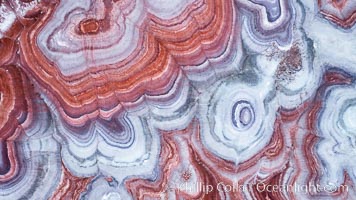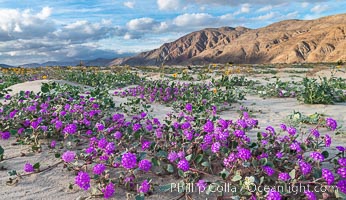
Sand verbena wildflowers on sand dunes, Anza-Borrego Desert State Park.
Species: Sand verbena, Abronia villosa
Location: Anza-Borrego Desert State Park, Borrego Springs, California
Image ID: 30495
Species: Sand verbena, Abronia villosa
Location: Anza-Borrego Desert State Park, Borrego Springs, California
Image ID: 30495
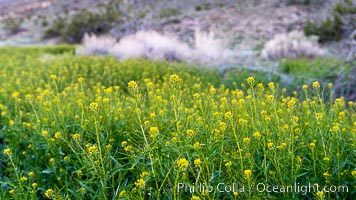
Mustard in bloom during the 2017 Superbloom, Anza Borrego.
Location: Anza-Borrego Desert State Park, Borrego Springs, California
Image ID: 33111
Location: Anza-Borrego Desert State Park, Borrego Springs, California
Image ID: 33111
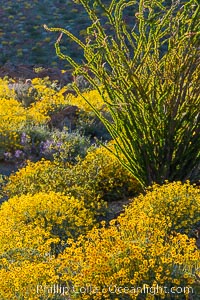
Brittlebush bloom in Anza Borrego Desert State Park, during the 2017 Superbloom.
Location: Anza-Borrego Desert State Park, Borrego Springs, California
Image ID: 33198
Location: Anza-Borrego Desert State Park, Borrego Springs, California
Image ID: 33198
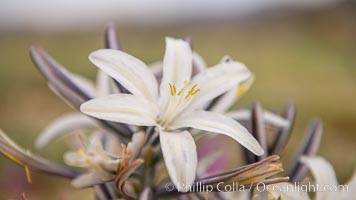
Desert Lily Hersperocallis undulata, Anza Borrego Desert State Park.
Species: Desert lily, Hesperocallis undulata
Location: Anza-Borrego Desert State Park, Borrego Springs, California
Image ID: 35194
Species: Desert lily, Hesperocallis undulata
Location: Anza-Borrego Desert State Park, Borrego Springs, California
Image ID: 35194
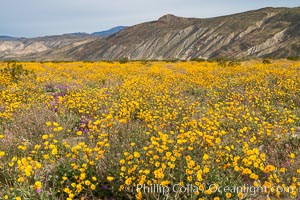
Desert Sunflower Blooming Across Anza Borrego Desert State Park.
Species: Desert Sunflower, Geraea canescens
Location: Anza-Borrego Desert State Park, Borrego Springs, California
Image ID: 35196
Species: Desert Sunflower, Geraea canescens
Location: Anza-Borrego Desert State Park, Borrego Springs, California
Image ID: 35196
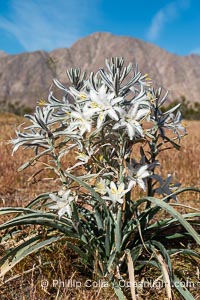
Desert Lily Blooming in Anza Borrego Desert State Park. While the Desert Lily is typically an uncommon or rare flower, in Spring 2024 it was present in enormous numbers. 2024 was the Year of the Desert Lily.
Species: Desert Lily, Hesperocallis undulata
Location: Anza-Borrego Desert State Park, Borrego Springs, California
Image ID: 40293
Species: Desert Lily, Hesperocallis undulata
Location: Anza-Borrego Desert State Park, Borrego Springs, California
Image ID: 40293
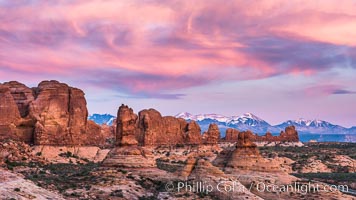
Sunset over Garden of the Gods, Arches National Park.
Location: Garden of the Gods, Arches National Park, Utah
Image ID: 29264
Location: Garden of the Gods, Arches National Park, Utah
Image ID: 29264
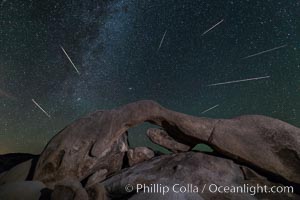
Perseid Meteor Shower over Arch Rock, Joshua Tree National Park, Aug 13, 2014.
Location: Arch Rock, Joshua Tree National Park, California
Image ID: 31144
Location: Arch Rock, Joshua Tree National Park, California
Image ID: 31144

Dune Evening Primrose bloom under the stars in Anza Borrego Desert State Park, during the 2017 Superbloom.
Species: Dune evening primrose, Oenothera deltoides
Location: Anza-Borrego Desert State Park, Borrego Springs, California
Image ID: 33166
Species: Dune evening primrose, Oenothera deltoides
Location: Anza-Borrego Desert State Park, Borrego Springs, California
Image ID: 33166
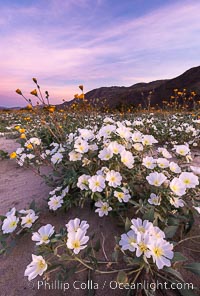
Dune Evening Primrose bloom in Anza Borrego Desert State Park, during the 2017 Superbloom.
Species: Dune evening primrose, Oenothera deltoides
Location: Anza-Borrego Desert State Park, Borrego Springs, California
Image ID: 33170
Species: Dune evening primrose, Oenothera deltoides
Location: Anza-Borrego Desert State Park, Borrego Springs, California
Image ID: 33170
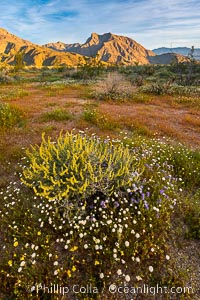
Wildflowers bloom in Anza Borrego Desert State Park, during the 2017 Superbloom.
Location: Anza-Borrego Desert State Park, Borrego Springs, California
Image ID: 33173
Location: Anza-Borrego Desert State Park, Borrego Springs, California
Image ID: 33173
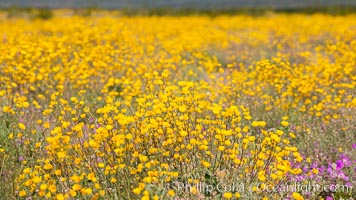
Desert Sunflower Blooming Across Anza Borrego Desert State Park.
Species: Desert Sunflower, Geraea canescens
Location: Anza-Borrego Desert State Park, Borrego Springs, California
Image ID: 35195
Species: Desert Sunflower, Geraea canescens
Location: Anza-Borrego Desert State Park, Borrego Springs, California
Image ID: 35195
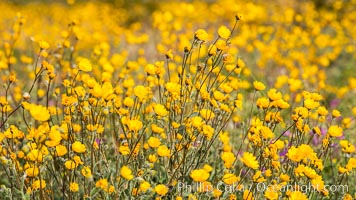
Desert Sunflower Blooming Across Anza Borrego Desert State Park.
Species: Desert Sunflower, Geraea canescens
Location: Anza-Borrego Desert State Park, Borrego Springs, California
Image ID: 35197
Species: Desert Sunflower, Geraea canescens
Location: Anza-Borrego Desert State Park, Borrego Springs, California
Image ID: 35197
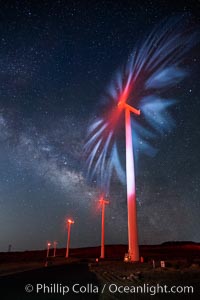
Ocotillo Wind Energy Turbines, at night with stars and the Milky Way in the sky above, the moving turbine blades illuminated by a small flashlight.
Location: Ocotillo, California
Image ID: 30239
Location: Ocotillo, California
Image ID: 30239
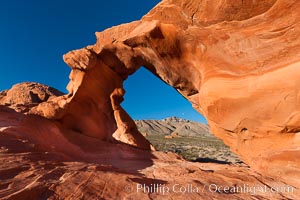
Arch Rock at sunrise, Valley of Fire State Park. Natural arch formed in sandstone. Sunrise with the full moon setting over mountains in the distance.
Location: Valley of Fire State Park, Nevada
Image ID: 26472
Location: Valley of Fire State Park, Nevada
Image ID: 26472
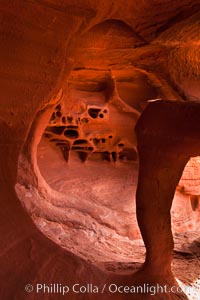
Fire Arch or Windstone Arch, also known as Fire Cave, is a tiny cave with a miniature arch and a group of natural pocket holes. Many people walk by this cave without realizing it is there!.
Location: Valley of Fire State Park, Nevada
Image ID: 26475
Location: Valley of Fire State Park, Nevada
Image ID: 26475
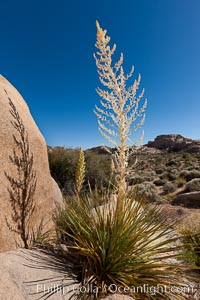
Parry's Nolina, or Giant Nolina, a flowering plant native to southern California and Arizona founds in deserts and mountains to 6200'. It can reach 6' in height with its flowering inflorescence reaching 12'.
Species: Parry's nolina, Nolina parryi
Location: Joshua Tree National Park, California
Image ID: 26725
Species: Parry's nolina, Nolina parryi
Location: Joshua Tree National Park, California
Image ID: 26725
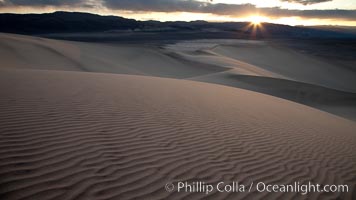
Sunset on the Eureka Dunes. The Eureka Valley Sand Dunes are California's tallest sand dunes, and one of the tallest in the United States. Rising 680' above the floor of the Eureka Valley, the Eureka sand dunes are home to several endangered species, as well as "singing sand" that makes strange sounds when it shifts. Located in the remote northern portion of Death Valley National Park, the Eureka Dunes see very few visitors.
Location: Eureka Dunes, Death Valley National Park, California
Image ID: 25240
Location: Eureka Dunes, Death Valley National Park, California
Image ID: 25240
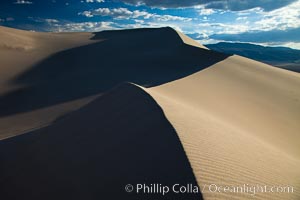
Eureka Dunes. The Eureka Valley Sand Dunes are California's tallest sand dunes, and one of the tallest in the United States. Rising 680' above the floor of the Eureka Valley, the Eureka sand dunes are home to several endangered species, as well as "singing sand" that makes strange sounds when it shifts. Located in the remote northern portion of Death Valley National Park, the Eureka Dunes see very few visitors.
Location: Eureka Dunes, Death Valley National Park, California
Image ID: 25241
Location: Eureka Dunes, Death Valley National Park, California
Image ID: 25241
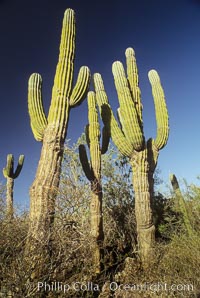
Cardon cactus, near La Paz, Baja California, Mexico. Known as the elephant cactus or Mexican giant cactus, cardon is largest cactus in the world and is endemic to the deserts of the Baja California peninsula. Some specimens of cardon have been measured over 21m (70) high. These slow-growing plants live up to 300 years and can weigh 25 tons. Cardon is often mistaken for the superficially similar saguaro of Arizona and Sonora, but the saguaro does not occupy Baja California.
Species: Cardon cactus, Elephant cactus, Pachycereus pringlei
Location: La Paz, Baja California, Mexico
Image ID: 05498
Species: Cardon cactus, Elephant cactus, Pachycereus pringlei
Location: La Paz, Baja California, Mexico
Image ID: 05498
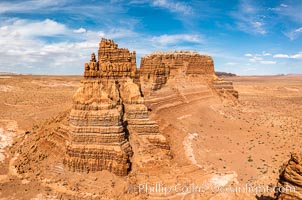
Molly's Castle, aerial view, Goblin Valley State Park.
Location: Mollys Castle, Goblin Valley State Park, Utah
Image ID: 38016
Location: Mollys Castle, Goblin Valley State Park, Utah
Image ID: 38016
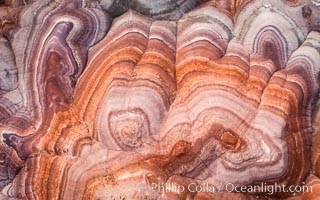
Fantastic colorful sedimentary patterns, Bentonite layers are seen as striations exposed in the Utah Badlands. The Bentonite Hills are composed of the Brushy Basin shale member of the Morrison Formation. This layer was formed during Jurassic times when mud, silt, fine sand, and volcanic ash were deposited in swamps and lakes. Aerial photograph.
Location: Utah
Image ID: 38029
Location: Utah
Image ID: 38029

La Quinta and Coachella Valley, aerial view, panorama.
Location: La Quinta, California
Image ID: 38154
Panorama dimensions: 3812 x 11549
Location: La Quinta, California
Image ID: 38154
Panorama dimensions: 3812 x 11549
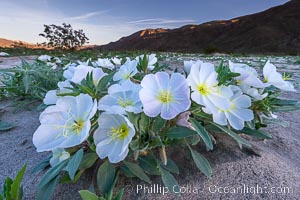
Dune Evening Primrose bloom in Anza Borrego Desert State Park, during the 2017 Superbloom.
Species: Dune evening primrose, Oenothera deltoides
Location: Anza-Borrego Desert State Park, Borrego Springs, California
Image ID: 33126
Species: Dune evening primrose, Oenothera deltoides
Location: Anza-Borrego Desert State Park, Borrego Springs, California
Image ID: 33126
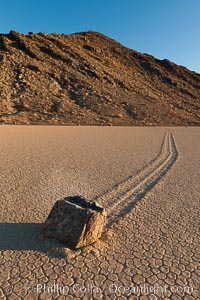
Sailing stone on the Racetrack Playa. The sliding rocks, or sailing stones, move across the mud flats of the Racetrack Playa, leaving trails behind in the mud. The explanation for their movement is not known with certainty, but many believe wind pushes the rocks over wet and perhaps icy mud in winter.
Location: Racetrack Playa, Death Valley National Park, California
Image ID: 27691
Location: Racetrack Playa, Death Valley National Park, California
Image ID: 27691
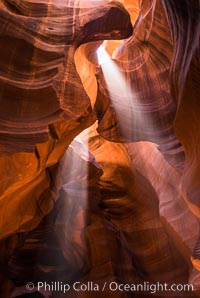
Light Beam in Upper Antelope Slot Canyon. Thin shafts of light briefly penetrate the convoluted narrows of Upper Antelope Slot Canyon, sending piercing beams through the sandstone maze to the sand floor below.
Location: Navajo Tribal Lands, Page, Arizona
Image ID: 28563
Location: Navajo Tribal Lands, Page, Arizona
Image ID: 28563
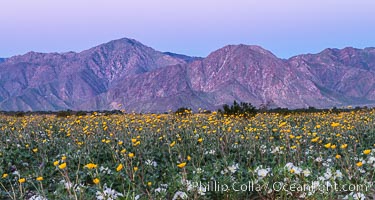
Wildflowers bloom in Anza Borrego Desert State Park, during the 2017 Superbloom.
Location: Anza-Borrego Desert State Park, Borrego Springs, California
Image ID: 33154
Location: Anza-Borrego Desert State Park, Borrego Springs, California
Image ID: 33154
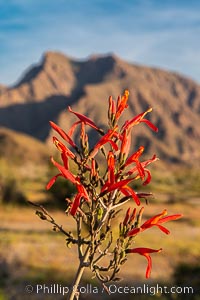
Wildflowers bloom in Anza Borrego Desert State Park, during the 2017 Superbloom.
Location: Anza-Borrego Desert State Park, Borrego Springs, California
Image ID: 33179
Location: Anza-Borrego Desert State Park, Borrego Springs, California
Image ID: 33179

Desert Sunflower blooms in a spectacular display in Anza Borrego Desert State Park during the 2017 Superbloom.
Species: Desert Sunflower, Geraea canescens
Location: Anza-Borrego Desert State Park, Borrego Springs, California
Image ID: 33188
Panorama dimensions: 5186 x 20028
Species: Desert Sunflower, Geraea canescens
Location: Anza-Borrego Desert State Park, Borrego Springs, California
Image ID: 33188
Panorama dimensions: 5186 x 20028
